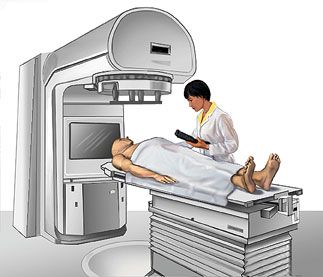ASTRO Guideline Recommends EBRT for Symptomatic Bone Metastases
ASTRO assembled a task force to create a guideline for the administration of palliative external beam radiation therapy for patients with symptomatic bone metastases.
ASTRO assembled a task force to create a guideline for the administration of palliative external beam radiation therapy for patients with symptomatic bone metastases.

The American Society for Radiation Oncology (ASTRO) created a task force to build the best clinical practice guideline for palliative external beam radiation therapy (RT) in patients with symptomatic bone metastases.
ASTRO concluded that RT is to be recommended for managing pain from bone metastases and spine metastases with or without spinal cord or cauda equina compression. For patients with spine metastases causing spinal cord or cauda equina compression, surgery and postoperative RT are recommended over RT alone, conditionally.
Conventional RT is recommended to be given at 800 cGY in 1 fraction, 2000 cGY in 5 fractions, 2400 cGY, or 3000 cGY in 10 fractions for patients with non-symptomatic bone metastases. For patients that are ineligible for surgery with spinal cord or cauda equina compression and receiving conventional RT, recommendations are 800 cGY in 1 fraction, 1600 cGY in 2 fractions, 2000 cGY in 5 fractions, or 3000 cGY in 10 fractions.
“Long-term data continue to support the use of short-course, conventional palliative RT regimens for patients with symptomatic bone metastases. However, evidence for conformal and dose-escalation approaches has moved from the experimental toward routine clinical care for select patients,” the study authors wrote. “These dramatic shifts in the management of patients with metastatic cancer highlight the crucial role of personalized and comprehensive patient assessment—including consideration of metastatic site, global disease characteristics, and patient goals and values—together with multidisciplinary input when selecting appropriate interventions for patients with symptomatic bone metastases.”
The task force assembled by ASTRO included palliative care specialists; radiation, medical, and surgical oncologists; and a patient representative, and was made in collaboration with the American Society of Clinical Oncology and the Musculoskeletal Tumor Society.
To create the guidelines, the members of the task force answered 5 key questions assessing the strength of recommendation (SoR) as either “strong” or “conditional” and assessing the quality of evidence (QoE) as high, moderate, low, or expert opinion.
Evidence identified from the key questions was judged on the population, intervention, comparator, outcome, timing, and setting (PICOTS) framework. Members of the task force stated their level of agreement for each recommendation from “strongly agree” to “strongly disagree”, or on the 5-point Likert scale. If 75% or more of the raters selected strongly agree or agree, consensus was achieved and any recommendations that did not meet this benchmark were removed/revised.
Regarding palliative RT in symptomatic bone metastases, the task force strongly recommended the use of RT to help reduce pain. The QoE was high for overall pain and moderate for neuropathic pain. RT was also strongly recommended to help improve ambulatory status, and sphincter function, and reduce pain in patients who have symptomatic spine bone metastases. The QoE was high. Additionally, if patients had symptomatic bone metastases with a life expectancy of 4 weeks or more, the guidelines gave a conditional SoR, with a low QoE.
When the impact of other treatments for bone metastases was analyzed, the guidelines noted conditional SoR for those who had metastases compressing the spinal cord or cauda equina and a low QoE. In addition, they recommend surgery with postoperative RT overRT alone. For those who have undergone surgery, a strong SoR for postoperative RT was noted with a low QoE. If patients had compression of the spinal cord or cauda equina, RT plus dexamethasone was recommended with strong SoR and low QoE.
Next, dose fractionation, constraints, and techniques for administration were assessed. A strong SoR was noted for conventional palliative RT and a high QoE. If there are metastases compressing the spinal cord or cauda equina in patients who may not receive surgical decompression, palliative RT was given a strong SoR and a high QoE. Additionally, conditional SoR was given to those with metastases compressing the spine or cauda equina and given dose-escalated palliative RT and highly conformal planning and delivery techniques. The QoE was low.
The task force looked to the reirradiation of bone metastases for those receiving dose fractionation regimens or constraints. If patients had metastases that would benefit from reirradiation, conventional palliative RT was recommended with strong SoR and a moderate QoE. Additionally, stereotactic body radiation therapy was recommended with conditional SoR and expert opinion QoE. If patients had non-spine metastases that would benefit from irradiation, single fraction or multi-fraction conventional palliative RT was given a strong SoR and a moderate QoE.
Finally, the task force looked at the differentiation between dose fraction regimens, techniques, and the impact of toxicity and quality of life. A share decision-making approach was given a strong SoR for those with bone metastases receiving palliative RT. This will help to determine dose, fractionation, and use of supportive measures. The QoE was expert opinion.
“Future studies are needed to address uncertainties in the current evidence base. Randomized studies that seek to delineate patient and disease characteristics that would most benefit from single- versus multifraction regimens, dose escalation, and advanced planning strategies would aid in optimizing patient selection. Attempts to standardize measurements of outcomes including pain response, local control, quality of life, impact of differences in cost and resultant financial burden across treatment approaches, and other patient-centered outcomes in the context of palliative RT are required to facilitate comparisons between interventions,” the authors concluded.
Reference
Alcorn S, Cortés ÁA, Bradfield L, et al. External beam radiation therapy for palliation of symptomatic bone metastases: an ASTRO clinical practice guideline. Pract Radiat Oncol. 2024;14(5):377-397. doi:10.1016/j.prro.2024.04.018
How Supportive Care Methods Can Improve Oncology Outcomes
Experts discussed supportive care and why it should be integrated into standard oncology care.